Apple variety Bryanskoe
The Bryanskoe apple tree has gained popularity among gardeners. It has 3 subspecies: pink, golden, scarlet.
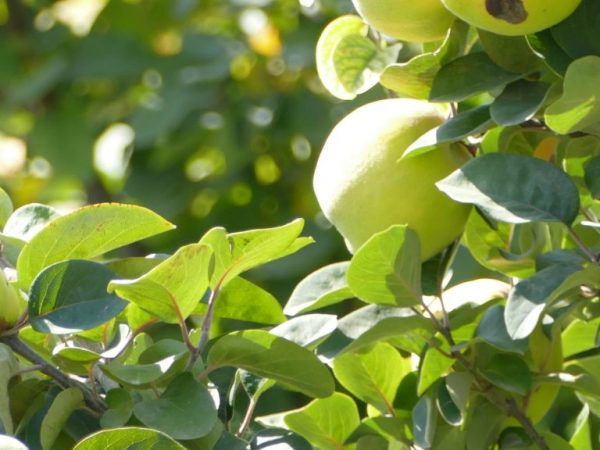
Apple variety Bryanskoe
Bred in the city of Bryansk in A. I. Astakhov at the VNII im. Lupine. Zoned in the Central zone of the Russian Federation. Planting in other areas is possible with proper care.
Variety characteristic
The variety has a fast growth rate. Annual growth is 60-70 cm.
The height of a tree at 5-6 years is 4-5 m. The maximum can grow up to 7 m. Flowering occurs in May, in the South - at the end of April.
Fruiting on ringlets and fruit twigs. Harvesting late - mid to late September.
Description of subspecies
Golden
Apple tree Bryansk golden begins to bear fruit 4 years after planting.
Description:
- the crown is dense, bright green;
- fruits are bright yellow, with subcutaneous punctures, weight 180-220 g, sometimes 270 g, oblong shape;
- the pulp is juicy, grainy, creamy white, sweet and sour taste;
- the smell is not very pronounced.
Pink
Fruiting within 6-7 years, starting from 3-4 years of age.
Description of the Bryansk pink apple tree:
- the crown is spherical, 4-6 m in diameter, the leaves are large and round, with a wavy edge, slightly wrinkled.
- apples are pink, with a bluish bloom, their weight is up to 200 g, there are specimens of 300 g each.
- the pulp is white, juicy, with a pleasant crunch, sweet and sour taste, tasting score: 4.8 points.
Aloe
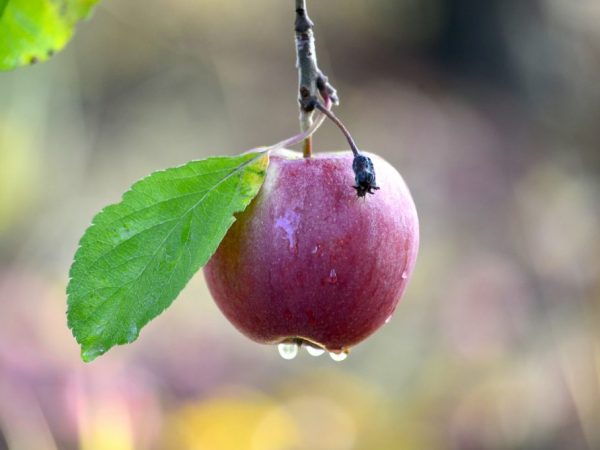
The fruits have good taste.
Apple tree Bryansk aloe has the following characteristics:
- spherical crown, medium thickened;
- leaves are large, short-pointed, light green, smooth, matte;
- the fruits are bright crimson, with a silvery bloom, the average weight is 150 g, the maximum performance is 200 g.
- the pulp is juicy, the taste is sweet and sour, the tasting score: 4.7 points.
Advantages and disadvantages
The positive qualities include the following qualities:
- early maturity;
- self-fertility - for tying hearths, it does not require planting a number of pollinating trees;
- scab immunity - inherent at the genetic level;
- endurance;
- presentation of fruits;
- winter hardiness - withstands indicators up to -35˚С;
- high yield - up to 200 kg of apples from one young tree, mature yields up to 300 kg;
- regular fruiting;
- apples do not crumble when ripe.
The disadvantages of the species include the short storage period of the crop - until December. If you keep it until spring, the flesh will loosen.
Semi-dwarf view
It was bred to preserve the positive qualities of the Bryanskoye apple variety, as well as to simplify the care and harvesting work. Distinctive characteristics of the species:
- tree height 2.5-3 m;
- the crown is narrow.
Begins to bear fruit from 3 years of age. Yield rates are lower than those of conventional species. They are increased due to denser landings.
Semi-dwarf crops live less, they are more susceptible to negative environmental influences.
Growing
Seat selection
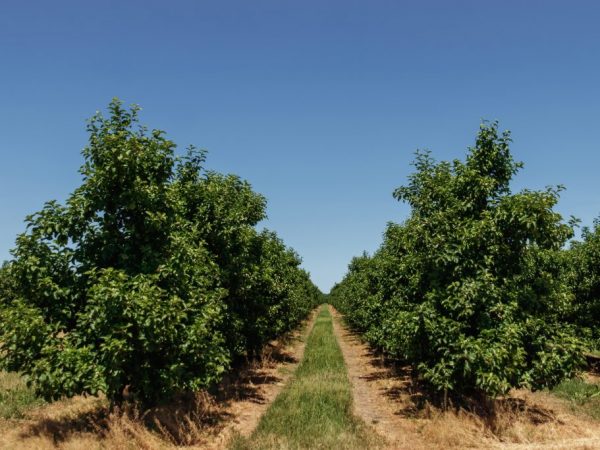
Trees need sunlight
The culture prefers a lighted, draft-free and non-swampy area.The recommended groundwater level is 2-2.5 m. If there is a risk of liquid stagnation, it is worth making drainage or landing on a hill.
The plant puts forward such requirements for the soil as moisture and air permeability. They correspond to loamy, sandy loam, floodplain soils. With proper care, sandy ground will do.
Acidity indicators should be neutral - 5.6-6 units.
Timing
Planting is carried out during the following period:
- Autumn - late September-early October. Work must be done before the onset of cold weather. Then the seedling will have time to adapt.
- In the spring - until the kidneys swell.
For this species, it is recommended to plant trees in the fall.
Planting pit preparation
The planting scheme is 5X5 m. Then the plants will be able to grow the crown, and caring for them and harvesting the fruits will be simplified.
The apple tree will take root and will be able to grow strong roots if the earth contains the necessary useful elements. To do this, dig a hole 0.7 m deep and 1 m in diameter.
Add to the soil:
- humus - 2 buckets;
- superphosphate - 200 g;
- potassium salt - 50 g.
The mixture is poured into the pit by a third. Make a mound by adding a bucket of humus and earth.
Heavy soils are improved with the help of such substances:
- river sand;
- gravel;
- fine crushed stone.
Sapling selection
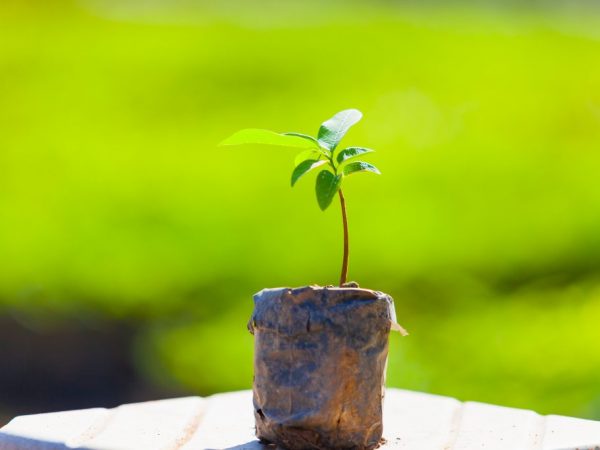
Choose a seedling with a good root system
The seedling must have a well-developed root system. It is better to choose an annual plant - it adapts faster.
If the root system is bare, up to 90% of its leaves are cut off. Several pieces are left on each branch. Do not cut the roots. The more there are, the faster the plant will take root.
Landing
The process is performed step by step:
- the seedling is placed in a planting hole on a mound so that the root collar is at the level of the soil;
- the roots are straightened;
- fall asleep with soil, tamp;
- a furrow is made around, into which 30 liters of water are poured;
- after absorbing the liquid, the area around the trunk is mulched - a layer of 10 cm;
- some gardeners spud the seedling with sawdust to a height of 20 cm.
Care
Watering
You need to moisten the soil under the tree 4-5 times a month: 1 bucket 2 times a day.
Particular attention is paid to watering in July and August. During this period, the fruits are poured and flower buds are laid for the next year.
Water is stopped in mid-August, otherwise the shoots will continue to grow, which will reduce the winter hardiness of the culture.
The irrigation regime is adjusted according to weather conditions. It is worth remembering that apple trees do not tolerate excessive moisture.
Top dressing
If the soil is fertilized when planting, then in the first period the tree does not require additional nutrients. They begin to feed him from the second year of life. They do this in spring and autumn. The following substances are used to choose from:
- horse humus or humus - 5-15 kg / m2;
- urea - 0.5-0.6 kg / m2;
- ammonium nitrate and nitroammophoska - 30-40 g / m² each.
In the fall, those that contain nitrogen are excluded from fertilizers. On rich soils, top dressing can be done infrequently. Poor people - they require an annual recharge.
Weeding and loosening
The trunk circle must be kept clean. No plants are planted in it, weeds are constantly weeded and the soil is loosened. Often this area is separated from the lawn with a curb tape.
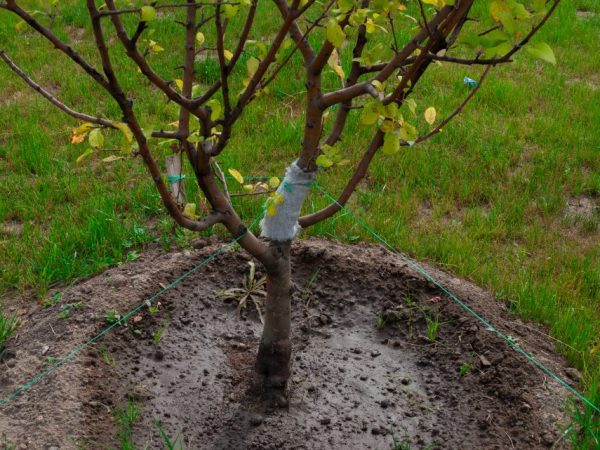
The trunk circle must be constantly weeded
Siderates are sown in row spacings. In August, they are mowed by laying hay near the trees.
Pruning
Thanks to the procedure, a high large-fruited yield is achieved, the taste of apples improves, and this also prevents the development of diseases.
Trimming is performed during planting. For this, the branches of the seedling are shortened by a third of their length. The following manipulations are performed in early spring until the buds swell.
Forms a rounded crown. Pruning provides for the implementation of the following recommendations:
- shorten annual branches by a third of the length;
- leave strong, erect shoots;
- cut them by 1/3 - for the first order, a little less - for the other:
- remove branches that descend to the ground, as well as curves, weak and those that go into the crown;
- do not delete more than ¼ of the total number of branches at once;
- do not leave any stumps when completely pruned.
Yield rationing
In the year of planting, 80-100% of the flowers must be cut off. This will help the tree to settle down well. The next season, half of the ovaries are removed, when the future apple reaches several centimeters in diameter.
Thanks to this, regular fruiting is achieved.
Preparing for the winter
In the description of the Bryanskoye apple variety, it is said about resistance to low temperatures.
But it's better to keep the culture safe, especially if it's young. So that early frosts or winters with little snow do not harm the plant, you need to perform the following actions:
- mulch the trunk circle with horse humus (5 cm layer);
- wrap the stem with a covering moisture and air permeable material.
To protect the culture from mice and hares, nylon tights are used. There is also a special rodent net on sale.
Diseases and pests
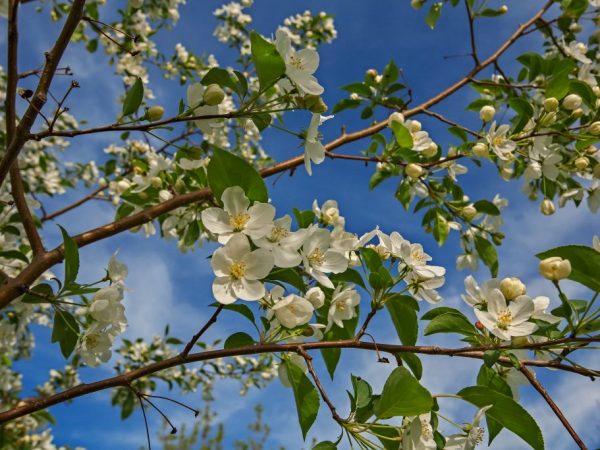
Apple yield depends on the quality of care
It is worth monitoring the health of the trees, then they will please with a high yield. The apple tree is resistant to scab, but it is affected by other diseases:
- Powdery mildew - white bloom appears on the leaves. They dry out over time. To combat, drugs with a sulfur content are used.
- Fruit rot - at first the apples are covered with brown circles. Then they appear in white stripes. The fruits rot and fall off. Bordeaux liquid is used for treatment.
Such insects can harm the culture:
- Caterpillars of a hawthorn butterfly - eat leaves. In the spring, trees are treated with Phosphamide or Karbofos.
- Winter moth - The caterpillar lays eggs on plants in the fall. Pests appear in the spring. The garden is sprayed with insecticides. They dig the earth under the trees.
- Fruit moth - damages apples, from which they fall unripe. Plants are sprayed with insecticides starting in mid-summer every 10 days.
- Aphids and mites - suck out the juice of the culture. They use infusion of tobacco or Karbofos.
Often the tree is damaged by a tinder fungus. It draws a lot of useful substances from the trunk. If it is not eliminated, then the process becomes non-reversible.
While the mushroom is soft, it can be removed with a garden knife, and later only with an ax. You need to trim near the base. If this is not done, the parasite will appear in the same place.
Preventive measures include the following:
- early crown formation;
- timely feeding, which includes potash fertilizers;
- the introduction of ash into the soil;
- digging up soil around the trunk;
- regular inspections.
Gardeners reviews
The Bryansk apple is large and juicy, it contains many vitamins. Its varieties - golden, pink and scarlet - have excellent taste and aroma. They can be grown for sale due to their high commercial qualities.
This tree is great for regions with cold winters. It does not need pollinators, but gardeners note that their presence will significantly increase yields.
To ensure a longer keeping quality of the fruit, all care recommendations must be followed. For small gardens, a dwarf species is suitable.

